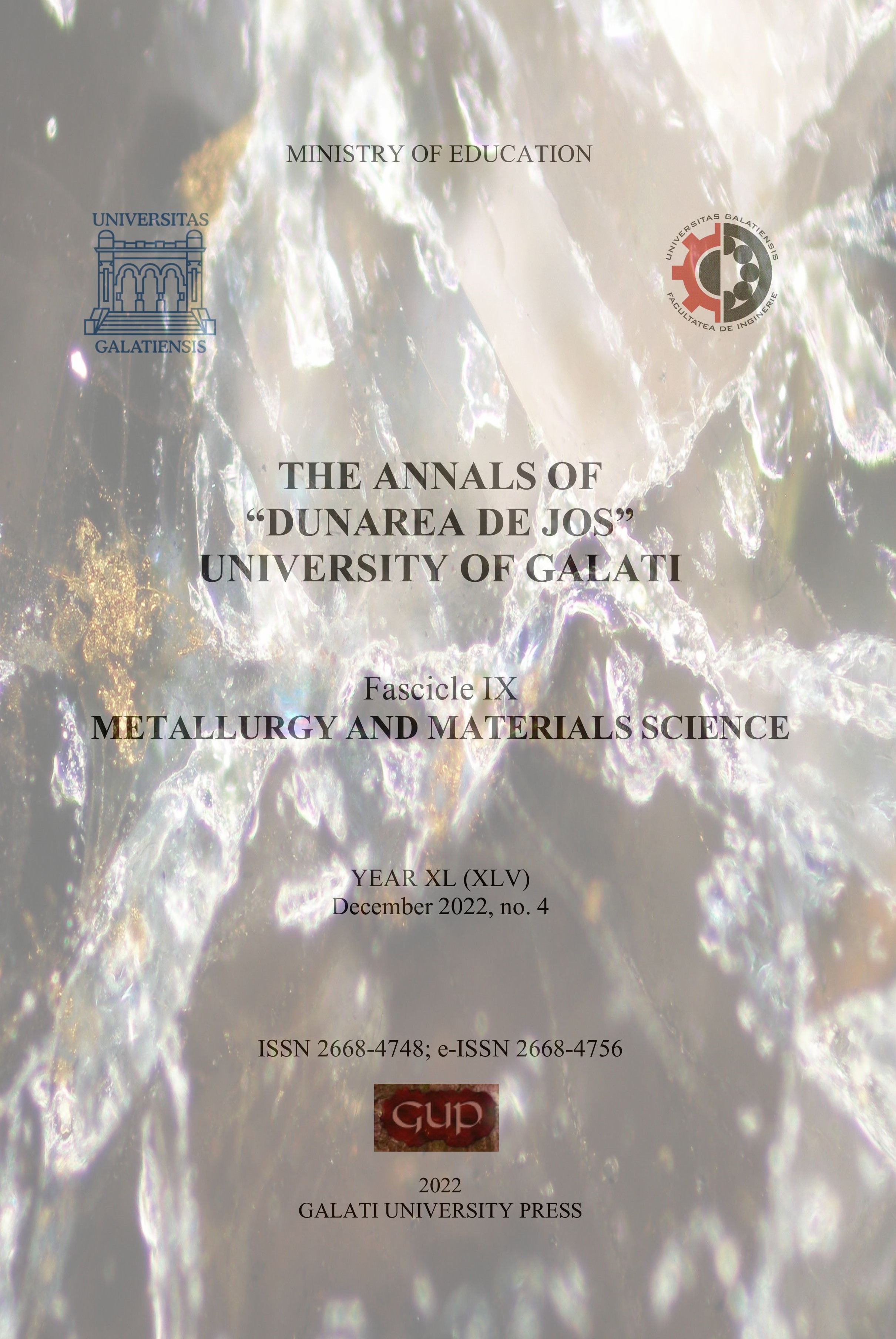CFD Modeling and Simulation of a Tiny House in Extreme Weather Conditions
Keywords:
CFD, modeling, simulation, house
Abstract
The subject of this research is the use of CFD techniques to identify the impact of using shutters in case of tiny house. Low temperatures and the aim to use as less energy amount as possible need solution. The composites shells allow designing efficient shutters that is isolating in an important manner windows. The CFD software allows to identify the air currents and the areas where heat is lost due to the extreme weather conditions.
Downloads
Download data is not yet available.
References
[1]. Balali A., Hakimelahi A., Valipour A., Identification and prioritization of passive energy consumption optimization measures in the building industry: An Iranian case study, Journal of Building Engineering, 30, p. 101239, 2020.
[2]. Ma L., Shao N., Zhang J., Zhao T., The Influence of Doors and Windows on the Indoor Temperature in Rural House, Procedia Engineering, 121, p. 621-627, 2015.
[3]. Zschaeck G., Frank T., Burns A., CFD modelling and validation of wall condensation in the presence of non-condensable gases, Nuclear Engineering and Design, vol. 279, p. 137-146, 2014.
[4]. Abdoly N. S., Haghparast F., Singery M., Sattari Sarbangholi H., Providing an Optimal Execution Model for Windows Based on Glazing to Reduce Fossil Fuel Consumption (Case Study: Asman Residential Complex of Tabriz), Iranian Journal (Iranica) of Energy and Environment, 11(4), p. 260-270, 2020.
[5]. Lechowska A. A., Schnotale J. A., Baldinelli G., Window frame thermal transmittance improvements without frame geometry variations: An experimentally validated CFD analysis, Energy and Buildings, 145, p. 188-199, 2017.
[6]. Huang J., Zhang J., Wang L., Review of vapor condensation heat and mass transfer in the presence of non-condensable gas, Applied Thermal Engineering, no. 89, p. 469-484, 2015.
[7]. Shankar V., Hagentoft C.-E., Influence of natural convection on the thermal properties of insulating porous medium with air cavity, Proceedings, Indoor Air ’99, The international society of indoor air quality and climate, Edinburgh, Scotland, 1999.
[8]. Shankar V., Davidson L., Olsson E., Numerical Investigation of Turbulent Plumes in both Ambient and Stratified Surroundings, Journal of indoor air, Denmark, 2019.
[9]. Hellsvik R., Transient Simulation of Ventilation Rate and Moister load for Cold Attic Constructions, Master Thesis, Chalmers University of Technology, Gothenburg, 2015.
[10]. Horikiri K., Yao Y., Yao J., Numerical simulation of convective airflow in an empty room, International Journal of Energy and Environment, vol. 5, p. 574-581, 2011.
[11]. Kuhn S. Z., An investigation of condensation from steam–gas mixtures flowing downward in a vertical tube, Nuclear Engineering and Design, p. 53-69, 1997.
[12]. Kwon-Yeong L., Moo Hwan K., Experimental and empirical study of steam condensation heat transfer with a noncondensable gas in a small-diameter vertical tube, Nuclear Engineering and Design, vol. 238, p. 207-216, 2008.
[2]. Ma L., Shao N., Zhang J., Zhao T., The Influence of Doors and Windows on the Indoor Temperature in Rural House, Procedia Engineering, 121, p. 621-627, 2015.
[3]. Zschaeck G., Frank T., Burns A., CFD modelling and validation of wall condensation in the presence of non-condensable gases, Nuclear Engineering and Design, vol. 279, p. 137-146, 2014.
[4]. Abdoly N. S., Haghparast F., Singery M., Sattari Sarbangholi H., Providing an Optimal Execution Model for Windows Based on Glazing to Reduce Fossil Fuel Consumption (Case Study: Asman Residential Complex of Tabriz), Iranian Journal (Iranica) of Energy and Environment, 11(4), p. 260-270, 2020.
[5]. Lechowska A. A., Schnotale J. A., Baldinelli G., Window frame thermal transmittance improvements without frame geometry variations: An experimentally validated CFD analysis, Energy and Buildings, 145, p. 188-199, 2017.
[6]. Huang J., Zhang J., Wang L., Review of vapor condensation heat and mass transfer in the presence of non-condensable gas, Applied Thermal Engineering, no. 89, p. 469-484, 2015.
[7]. Shankar V., Hagentoft C.-E., Influence of natural convection on the thermal properties of insulating porous medium with air cavity, Proceedings, Indoor Air ’99, The international society of indoor air quality and climate, Edinburgh, Scotland, 1999.
[8]. Shankar V., Davidson L., Olsson E., Numerical Investigation of Turbulent Plumes in both Ambient and Stratified Surroundings, Journal of indoor air, Denmark, 2019.
[9]. Hellsvik R., Transient Simulation of Ventilation Rate and Moister load for Cold Attic Constructions, Master Thesis, Chalmers University of Technology, Gothenburg, 2015.
[10]. Horikiri K., Yao Y., Yao J., Numerical simulation of convective airflow in an empty room, International Journal of Energy and Environment, vol. 5, p. 574-581, 2011.
[11]. Kuhn S. Z., An investigation of condensation from steam–gas mixtures flowing downward in a vertical tube, Nuclear Engineering and Design, p. 53-69, 1997.
[12]. Kwon-Yeong L., Moo Hwan K., Experimental and empirical study of steam condensation heat transfer with a noncondensable gas in a small-diameter vertical tube, Nuclear Engineering and Design, vol. 238, p. 207-216, 2008.
Published
2022-12-15
How to Cite
1.
MARIN F-B, MARIN M. CFD Modeling and Simulation of a Tiny House in Extreme Weather Conditions. The Annals of “Dunarea de Jos” University of Galati. Fascicle IX, Metallurgy and Materials Science [Internet]. 15Dec.2022 [cited 24Dec.2025];45(4):96-9. Available from: https://gup.ugal.ro/ugaljournals/index.php/mms/article/view/5827
Issue
Section
Articles



